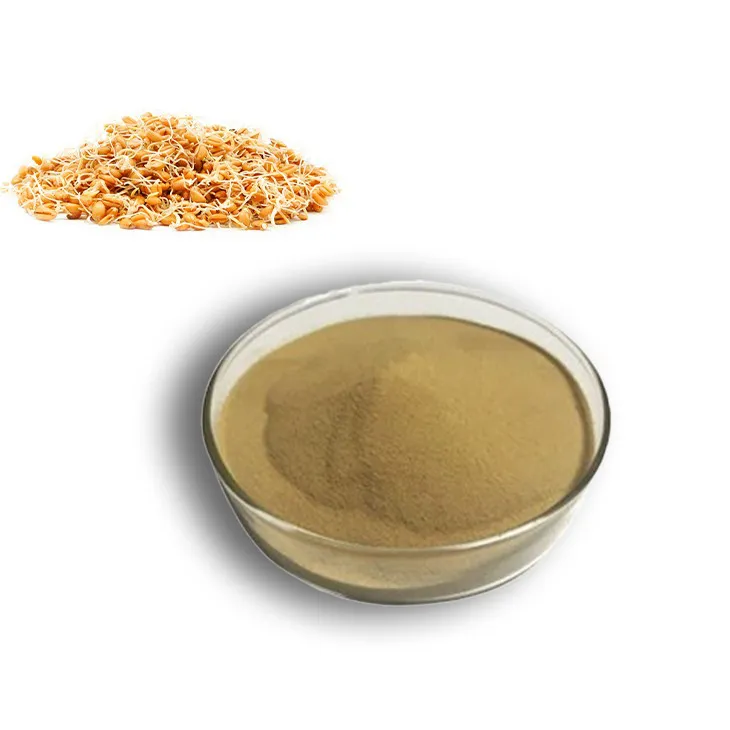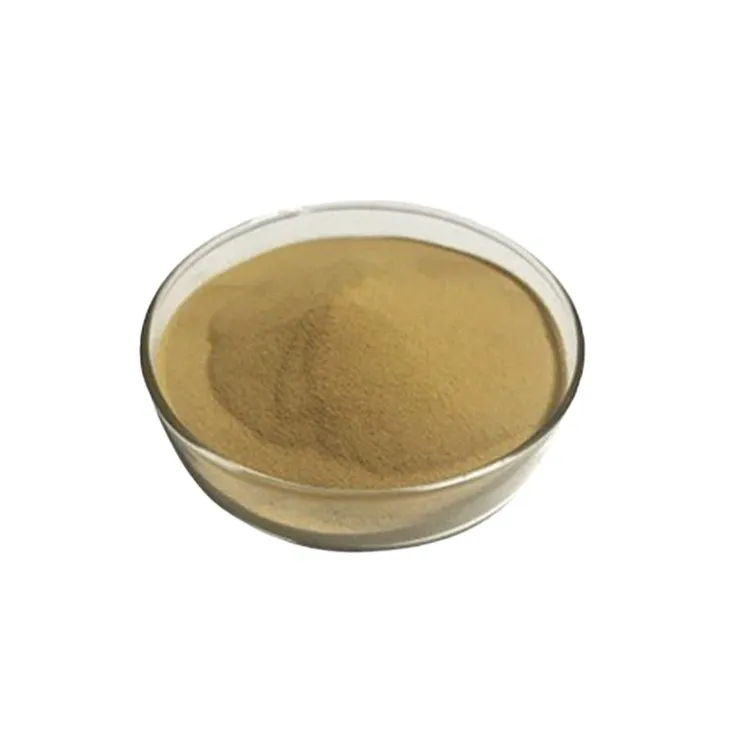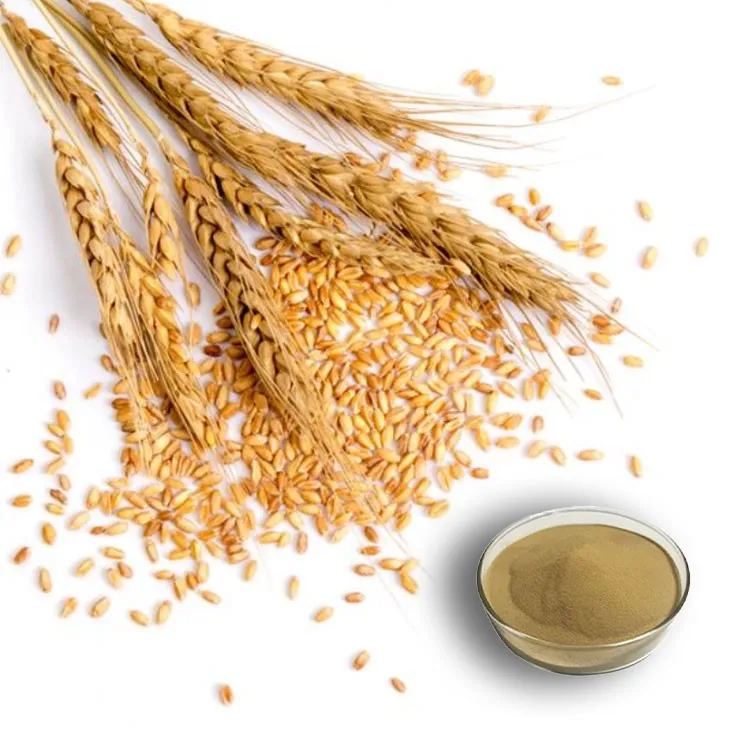- 0086-571-85302990
- sales@greenskybio.com
Extraction Technology and Production Process of Wheat Germ Extract.
2024-11-27

1. Introduction
Wheat germ is a very important part of the wheat kernel, rich in various nutrients such as vitamins, minerals, and healthy fats. Wheat Germ Extract has attracted increasing attention in recent years due to its potential applications in dietary supplements, pharmaceuticals, and functional foods. The extraction technology and production process play a crucial role in obtaining high - quality Wheat Germ Extract.

2. Extraction Technology
2.1 Supercritical Fluid Extraction
Supercritical fluid extraction (SFE) is one of the most advanced extraction methods for Wheat Germ Extract. Among various supercritical fluids, supercritical CO2 is widely used. Under specific temperature and pressure conditions, supercritical CO2 can reach a state with properties between gas and liquid. It has the ability to penetrate into the wheat germ matrix and selectively extract valuable components. For example, it can effectively extract lipids, tocopherols, and other bioactive substances from wheat germ.
One of the major advantages of supercritical CO2 extraction is its environmental friendliness. Unlike traditional organic solvent extraction methods, supercritical CO2 is non - toxic, non - flammable, and leaves no solvent residues in the extract. This is extremely important for applications in the food and pharmaceutical industries, where product safety and purity are highly demanded.
The extraction efficiency of supercritical fluid extraction depends on several factors, including temperature, pressure, extraction time, and the flow rate of the supercritical fluid. For instance, increasing the pressure within a certain range can enhance the solubility of the target components in the supercritical fluid, thus improving the extraction yield. However, excessive pressure may also lead to the extraction of unwanted components, so a proper balance needs to be maintained.
2.2 Solvent Extraction
Solvent extraction is also a commonly used method for wheat germ extraction. Organic solvents such as hexane, ethanol, and acetone can be used. Ethanol, in particular, is a relatively safe and effective solvent for extracting certain components from wheat germ.
However, solvent extraction has some limitations. The main drawback is the potential solvent residue in the extract, which may affect the quality and safety of the final product. In addition, the extraction process may require more complex post - treatment steps to remove the solvent completely.

3. Production Process
3.1 Pretreatment of Wheat Germ
Before extraction, proper pretreatment of wheat germ is necessary to increase the extraction efficiency. The first step in pretreatment is usually drying. Drying can reduce the moisture content of wheat germ, which helps to prevent the growth of microorganisms during storage and extraction. Different drying methods can be used, such as air drying, oven drying, or freeze - drying. Freeze - drying is a relatively gentle drying method that can better preserve the bioactivity of the components in wheat germ, but it is also more expensive.
After drying, grinding is another important pretreatment step. Grinding can break the cell walls of wheat germ, making the internal components more accessible to the extraction solvent or supercritical fluid. The particle size of the ground wheat germ should be controlled within an appropriate range. If the particle size is too large, the extraction efficiency will be low; if it is too small, it may cause problems such as clogging during the extraction process.
3.2 Extraction
As mentioned above, depending on the chosen extraction method (supercritical fluid extraction or solvent extraction), different operating conditions need to be set. In supercritical fluid extraction, the temperature and pressure need to be precisely controlled according to the properties of the target components and the supercritical fluid. For solvent extraction, the type and concentration of the solvent, as well as the extraction time and temperature, are important factors to consider.
During the extraction process, continuous stirring or agitation can be applied to improve the mass transfer between the wheat germ and the extraction medium. This helps to ensure that the target components are effectively extracted.
3.3 Purification
After extraction, the obtained extract usually contains a mixture of various components, and further purification is required. Chromatographic separation technology is often used for this purpose. High - performance liquid chromatography (HPLC) and gas chromatography (GC) are two common chromatographic techniques.
HPLC is suitable for separating and purifying polar and semi - polar components in the wheat germ extract. It can achieve high - resolution separation based on the different affinities of components to the stationary phase and the mobile phase. GC, on the other hand, is mainly used for analyzing and purifying volatile components. By using different columns and detection methods, specific components can be isolated and purified from the extract.
3.4 Quality Control
Throughout the production process of wheat germ extract, strict quality control measures need to be implemented. This includes monitoring the quality of raw materials (wheat germ), controlling the extraction and purification processes, and testing the final product.
For raw materials, parameters such as the origin, variety, and purity of wheat germ should be checked. During the extraction and purification processes, key parameters such as temperature, pressure, and solvent concentration need to be closely monitored to ensure that they are within the specified ranges. For the final product, various tests need to be carried out, including assays for the content of active ingredients, tests for solvent residues, and microbiological tests to ensure its safety and efficacy.

4. Safety and Hygiene Regulations
The production of wheat germ extract is subject to strict safety and hygiene regulations, especially when it is used in dietary supplements, pharmaceuticals, and functional foods.
- In the food industry, wheat germ extract must comply with food safety regulations. This includes limits on heavy metal content, pesticide residues, and microbial contamination. For example, the maximum allowable levels of lead, mercury, and arsenic in the extract are strictly regulated to ensure that the product is safe for human consumption.
- In the pharmaceutical industry, even more stringent regulations are applied. The production process needs to follow good manufacturing practice (GMP) guidelines. This includes requirements for cleanroom facilities, personnel training, and documentation of all production steps. The purity and potency of the wheat germ extract used in pharmaceuticals must be accurately determined and controlled.
- For dietary supplements, although the regulations may be less strict than those in the pharmaceutical industry, they still require compliance with certain standards. Manufacturers need to ensure that the product label accurately reflects the content and benefits of the wheat germ extract, and that the product does not contain any harmful substances.

5. Conclusion
The extraction technology and production process of wheat germ extract are complex and multi - faceted. Supercritical fluid extraction offers an environmentally friendly and efficient method, while solvent extraction also has its own applications in certain cases. The production process involves multiple steps, including pretreatment, extraction, purification, and quality control, all of which are crucial for obtaining high - quality wheat germ extract. Strict safety and hygiene regulations must be followed to ensure the suitability of the extract for different applications in dietary supplements, pharmaceuticals, and functional foods. With the increasing demand for natural and healthy products, the development and improvement of wheat germ extract production technology will continue to be an important area of research.
FAQ:
What are the advantages of supercritical fluid extraction in wheat germ extract extraction?
Supercritical fluid extraction, such as using supercritical CO2, has the advantages of being environmentally friendly and leaving no solvent residues. It can penetrate into the wheat germ matrix and extract valuable components effectively under specific temperature and pressure conditions.
Why is pretreatment necessary in the production process of wheat germ extract?
Pretreatment of wheat germ, like drying and grinding, is necessary to increase the extraction efficiency. It helps to make the valuable components more accessible for extraction.
What is the role of chromatographic separation technology in the production of wheat germ extract?
Chromatographic separation technology can be used for further purification of the wheat germ extract. It helps to separate and purify the components of the extract more precisely.
What safety and hygiene regulations are involved in the production of wheat germ extract?
The production of wheat germ extract involves strict safety and hygiene regulations to meet the requirements of different applications in dietary supplements, pharmaceuticals, and functional foods. These regulations ensure the quality and safety of the product for human consumption.
Can you briefly introduce the overall production process of wheat germ extract?
First, the wheat germ needs pretreatment such as drying and grinding. Then, extraction methods like supercritical fluid extraction are used to extract valuable components. After that, chromatographic separation technology can be applied for further purification. Throughout the process, strict safety and hygiene regulations are followed.
Related literature
- Optimization of Supercritical Fluid Extraction of Wheat Germ Oil"
- "Wheat Germ Extract: Production, Composition and Potential Health Benefits"
- "Advanced Techniques in the Purification of Wheat Germ Extracts"
- ▶ Hesperidin
- ▶ citrus bioflavonoids
- ▶ plant extract
- ▶ lycopene
- ▶ Diosmin
- ▶ Grape seed extract
- ▶ Sea buckthorn Juice Powder
- ▶ Beetroot powder
- ▶ Hops Extract
- ▶ Artichoke Extract
- ▶ Reishi mushroom extract
- ▶ Astaxanthin
- ▶ Green Tea Extract
- ▶ Curcumin Extract
- ▶ Horse Chestnut Extract
- ▶ Other Problems
- ▶ Boswellia Serrata Extract
- ▶ Resveratrol Extract
- ▶ Marigold Extract
- ▶ Grape Leaf Extract
- ▶ blog3
- ▶ blog4
-
Active components in dandelion leaf extract.
2024-11-27
-
Chinese Rose Hip Extract Factories.
2024-11-27
-
Supplier of Hedyotis diffusa extract.
2024-11-27
-
Uridine-5'-monophosphate Disodium salt
2024-11-27
-
Stevia Extract
2024-11-27
-
Okra Extract
2024-11-27
-
Saponin Extract
2024-11-27
-
Pueraria Lobata Extract
2024-11-27
-
Lycopene
2024-11-27
-
Andrographis Paniculata Extract Powder
2024-11-27
-
Hawthorn powder
2024-11-27
-
Agaricus Blazei Extract
2024-11-27
-
Oyster Mushroom Extract Powder
2024-11-27





















